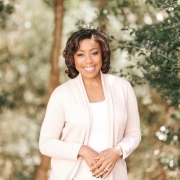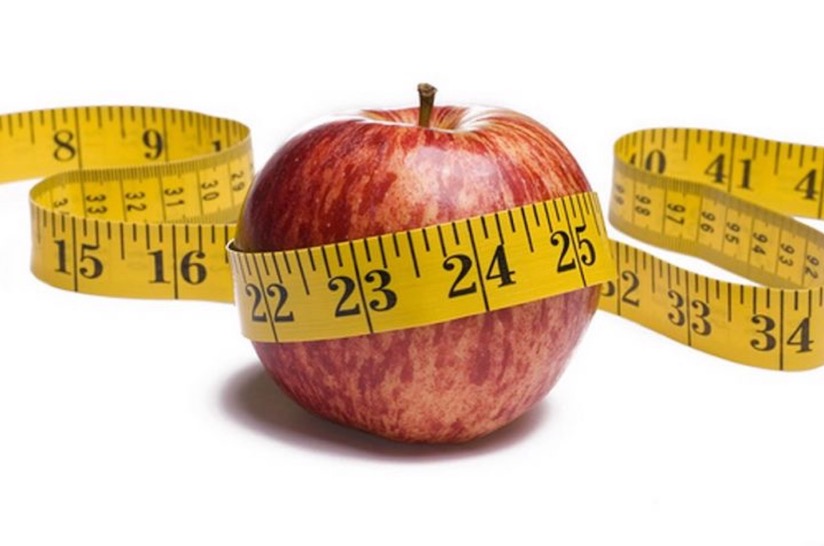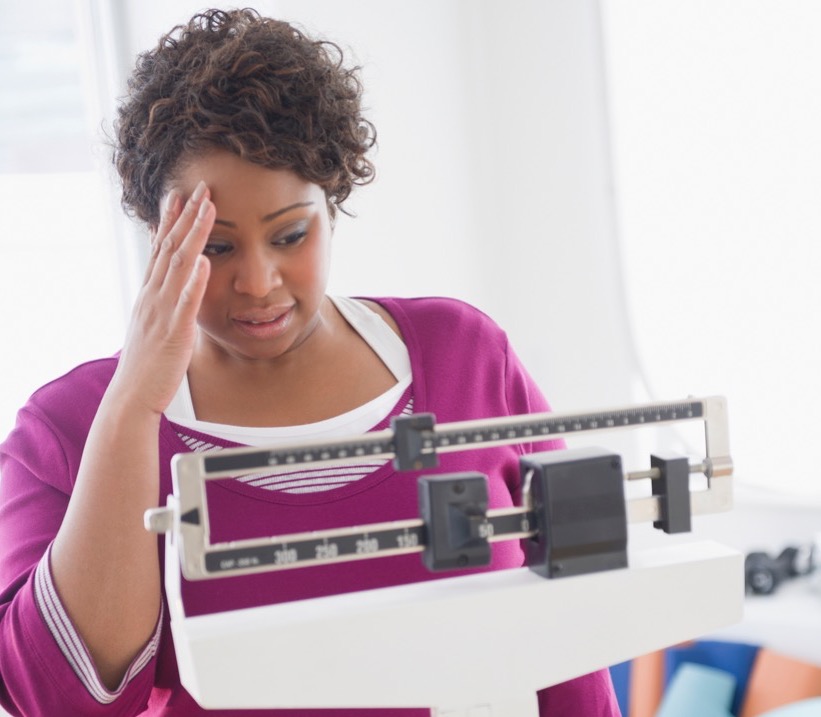I’m always amazed by the powerful psychological effects of the bathroom scale, especially among women. All too often, unfavorable numbers negatively influence self-esteem, body image, and overall perceptions of beauty. In many cases, mounting fears of rising numbers may even prompt women to engage in risky dieting, fasting and/or exercise habits as they attempt to thwart unfavorable changes in body weight.
Related Article: The 6 Worst Weight Loss Methods Ever
And, though scale readings can fluctuate by as much as five pounds a day from water weight alone, many women swear by them, oftentimes weighing in once or even twice a week in hopes of tipping the numbers just a little in their favor.
If you’re reading this, you’re probably one of these women—Relying too heavily on the scale.
You’re likely frustrated and discouraged because you’re not losing weight as quickly as you’d hoped and remain dissatisfied with your physical appearance.
Related Article: How to Lose Weight Without Getting Flabby Skin
Truth is, the scale is misleading you.
It isn’t giving you the full picture.
The only thing the scale can do is measure your total body weight. It doesn’t distinguish between fat weight and the weights of fat-free tissues and bodily fluids like bone, muscle, blood, and water.
Depending on your initial size (slightly overweight versus extremely obese) and the types of exercises you regularly perform (cardio exercise, weight training or a combination of both), you may experience rapid drops or even slight gains in your total body weight.
Such changes aren’t necessarily indicators of either ‘success’ or ‘unsuccess’!
Rapid weight loss could be a sign of muscle wasting and reduced water weight while slight gains could be indicative of favorable increases in muscle mass and reduced body fat. Given these complexities, scale readings can easily be wrong and are arguably useless measures of progress.
Related Article: Women and Weight Loss: Act Like a Man and Lose More Weight
For such reasons, when it comes to measuring weight loss success, I highly advise focusing less on tipping the scale and more on ‘non-scale’ metrics. These are generally more meaningful, as they can help you make sense of those meaningless numbers on the bathroom scale.
The only thing the scale can do is measure your total body weight. It doesn’t distinguish between fat weight and the weights of fat-free tissues and bodily fluids like bone, muscle, blood, and water.
In the following paragraphs, I’ll highlight some of the most concrete and easily trackable metrics and explain why each is uniquely valuable.
Body Composition
If you’re serious about weight loss, understanding and regularly assessing your body composition is of the utmost importance. The measurement of body composition is essentially an estimate of fat and fat-free weight relative to your total body weight. Since the basic scale doesn’t distinguish between the two, you can’t be certain about what you’re losing.
As I mentioned earlier, fat-free weight includes vital bodily fluids (blood and water) and “lean” tissues (bone and muscle), all of which are naturally denser than fat. So, an ideal body composition basically encompasses a low percentage of fat weight and a high percentage of fat-free weight.
Related Article: The Body Mass Index Versus Body Composition: What You Need to Know
If you regularly engage in weight training and generally carry a lot of muscle, it’ll likely appear as though you’re heavier on the scale when in all actuality, you’re just leaner. This is why measuring your body composition is a better metric of weight loss success.
There are many ways to assess your body composition including underwater weighing, dual-energy X-ray absorptiometry (DEXA), air displacement plethysmography (ADP) assessed via the Bod Pod, skinfold calipers, and bioelectrical impedance (BIA) devices. Most universities and colleges offer these tests at very low prices or even for free if you’re willing to participate in research.
Of all assessments, skinfold caliper and BIA analyses are the most economical. Fitness centers, gyms and health clubs generally offer at least one of these analyses for either no cost or very low cost.
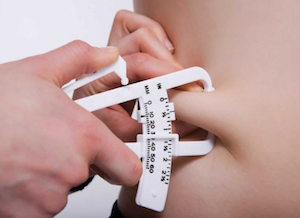
Another option is to purchase yourself a good BIA device for at-home use. Tons of these devices are currently available on the market, many of which take the form of bathroom scales. This is a win-win if you’re already a scale addict!
Now, I’d be remiss if I didn’t mention that costlier methods are generally the most accurate but the information obtained is well it.
However, regardless of the method you choose, you can get a good indicator of your body composition by ensuring all your measurements are carried out using the same method under the same conditions (same time of day, wearing the same clothing, and being well-hydrated).
Circumference Measurements
Taking circumference (girth) measurements is one of the simplest methods by which you can measure your weight loss progress. Doing so is relatively cheap and much more useful than simply weighing yourself, as you’ll be able to track the number of inches you lose, which is more indicative of changes in your body composition.
Related Article: Guidelines for Taking Circumference Measurements
Since muscle is denser than fat, it’ll take up less space in the body; therefore, reductions in girth are a sure sign of enhanced leanness.
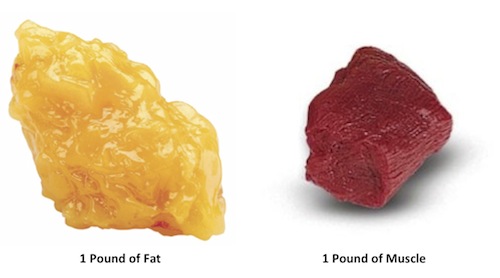
Simply take measurements from key parts of your body like your shoulders, arms, forearms, chest, hips, thighs, and calves once or twice a month.
Adding a waist girth measurement is also especially useful for directly assessing your visceral (belly) fat level and general risk of obesity-related diseases such as diabetes, cardiovascular diseases, and some forms of cancer.
For best accuracy, I recommend using a Gulick, AnthroFlex or Lufkin tape measurer made of linen or plastic and carrying out your measurements with the help of a partner.
Photographs
Taking before and after photographs of yourself is by far the simplest and most economical way to measure your progress in real time. And pictures never lie, which is why a lot of women start dieting after seeing unattractive photographs of themselves.
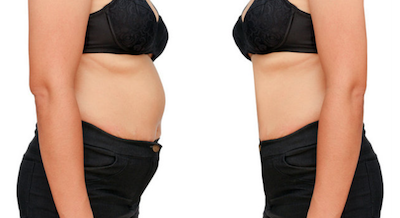
To capture your body in its entirety, wear a bikini or a sports bra with short shorts—Maybe even nothing at all to get the full effect. You can then stand in front of a white wall or door and start snapping multiple portrait-sized photographs of yourself at front, side, and back angles.
That’s it!
Since photographs don’t cost a thing, you can easily snap them as often as you wish. However, I generally recommend doing so only once or twice a month to give your body sufficient time for noticeable change.
Related Article: 3 Highly Effective Ways to Lose Weight Without Counting Calories
Now, hopefully I’ve provided you with some good information and valuable strategies for measuring your weight loss success. At the end of the day, true indicators of success go way beyond the measurement capabilities of the basic bathroom scale, which is why the metrics I’ve highlighted here are especially useful.
In addition to these measurements, I also encourage you to focus more on how your body looks and how you feel about it. If you’re generally pleased with your results, chances are you’re doing the right things. When all is said and done, that’s really all that matters!
Related Article: 5 Reasons Why Resistance Training Is Necessary for Weight Loss


